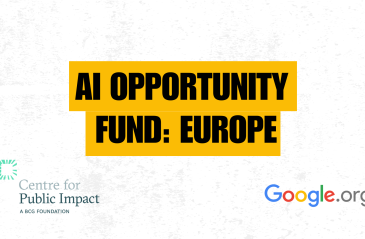
The power of storytelling in climate leadership

Governments need to upgrade skills levels in areas such as digital and procurement
Share articleTransformation really begins when leaders focus on the effectiveness of their HR team
Share articleBuilding a strong brand, bringing new hires on board, and retaining top talent are all vital
Share articleWe put our vision for government into practice through learning partner projects that align with our values and help reimagine government so that it works for everyone.
Still think that a career in a government workforce offers the security of a job for life? Think again.
In the US, for example, the Department of Defense recently announced an 8% cut in Army staff and a 17,000-person reduction in the civilian workforce. By no means are such moves limited to that side of the Atlantic - Ministère de la Défense staff in France have fallen from 330,000 in 2006 to 270,000 today, and civil service numbers in the UK have plunged by almost a fifth since 2010.
Unfortunately, reduced public budgets, which frequently lead to such large-scale reorganisations, are not the only issue facing today's policymakers. At the same time as citizen expectations of public services are (rightly) increasing, governments also need to upgrade skills levels in many areas - such as digital and procurement, for example. And the composition of workforces is changing. In OECD countries, one-third of employees are over 50, which means that a great deal of institutional expertise is poised to exit the building.
Government leaders juggle myriad issues on a daily or even hourly basis. But amidst the ever-shifting array of interests and demands that land on their desk, they also need to find time to refocus their efforts on improving the recruitment, training and management of their workforce. The question is:how?
The scale of the challenges facing governments today will trigger major shifts, including changes in the scope and mission of some roles, improved processes, and reorganisations. But challenges also create opportunities. For example, as older workers retire there will be potential for a greater streamlining of operations, with some positions replaced through an expanded use of digital technology.
However, the process of transformation really begins when leaders focus on improving the efficiency and effectiveness of their HR team. It can be done. In France, a detailed review of operations at a major public agency found that many employees were performing mainly low-value administrative work. Using the lean approach, the agency conducted workshops that redesigned processes and functions, which ultimately made it possible to leave certain positions unfilled after workers retired.
Leaders also need to build strong connections with internal stakeholders and management, including top managers and staff who are running operations on the ground. Strong channels of communication with agency leaders will also ensure that the strategy of the HR organisation and that of the overall government agency are aligned. Similarly, it is vitally important to involve unions in any major organisational change. Not only can they provide valuable insights on potential obstacles to change but, if they are involved in the actual design, they are more likely to become effective promoters and facilitators of the proposals.
HR reform also depends on government leaders stepping back from the day-to-day and thinking strategically. They must understand not only the wider challenges and ambitions of the organisation but also the implications of those challenges and ambitions for HR. Tools like strategic workforce planning (SWP) can help them accurately model future labour supply and demand, as well as ensuring that HR policies in recruiting, training, mobility and retention are aligned with the future needs of the organisation. This is particularly important in helping to avoid short-term cost savings that can actually lead to long-term cost increases.
Budget cuts and changing skill and personnel requirements are leading to the consolidation of teams and the redeployment of staff to new jobs, and HR has a clear role in setting out internal mobility options to those affected. After all, increased mobility contributes to richer career paths, greater worker engagement and a better match between talent supply and demand. Public-sector leaders in Germany have increased worker mobility by creating a new career option, the horizontal career track, which gives staff the option of switching to a job at the same management level but with different duties and responsibilities.
Such flexibility will help address recruiting challenges, but this is more than just scouting for talent. It also includes building a strong employer brand, successfully bringing new hires on board, and taking steps to retain top talent through, for example, strong training and development processes. This talent management should also include clearly defined individual and organisational goals and the development of action plans in cases where performance is falling short.
But it's not just about internal matters. Government HR teams also need to focus outwards because external relationships, especially with subcontractors, can help when it comes to handling seasonal spikes in demand in areas such as tax collection and building maintenance. Building strong ties with talented technology-oriented freelancers, for example, can also speed up the development of digital tools.
Transforming a public-sector HR organisation won't happen overnight. It will take time and patience. But the imperative for change has become impossible to ignore. HR plays a key role in the journey towards an improved government performance. The better the performance, the stronger the public impact - it's time to rise to the challenge.
Read more: Creating People Advantage in the Public Sector on BCG Perspectives












